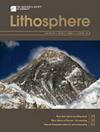基于机器学习流单元指数的储层渗透率评价方法
IF 1.7
4区 地球科学
Q3 GEOCHEMISTRY & GEOPHYSICS
引用次数: 0
摘要
X坳陷Y气田H组属于受沉积、成岩、胶结作用影响的低渗透致密砂岩储层。目标层岩性、孔隙结构复杂,具有较强的物理非均质性和复杂的孔渗关系。传统的岩心孔隙渗透率回归和核磁共振软件定义射电方法在渗透率计算精度上不能满足精确评价的要求。本研究基于流动区指数法(FZI)原理,分析了孔隙结构对渗透率的影响,并从压汞毛细管压力曲线中提取了最大孔喉半径(Rmax)、驱油压力(Pd)和平均喉半径(R)三个孔隙结构表征参数。澄清了FZI与孔隙结构的关系。因此,该区域的FZI可以表征不同流动单元内渗透率的差异。基于流动单元理论,建立了研究区三种类型储层的精细化评价模型。利用机器学习技术对常规测井曲线的响应特征和相关性进行分析,选择了3条优化组合曲线,建立了FZI的多参数拟合方程,并将其应用于新井渗透率预测。结果表明,计算渗透率与岩心分析结果高度吻合,为低渗透致密储层的精确评价提供了理论依据。本文章由计算机程序翻译,如有差异,请以英文原文为准。
A Method for Evaluating Reservoir Permeability Based on Machine Learning Flow Unit Index
Abstract The H formation of the Y gas field in the X depression belongs to a low-permeability tight sandstone reservoir affected by sedimentation, diagenesis, and cementation. The lithology and pore structure of the target layer are complex, with strong physical heterogeneity and complex pore-permeability relationships. Conventional core pore permeability regression and nuclear magnetic resonance software-defined radio methods do not satisfy the requirements for precise evaluation in terms of permeability calculation accuracy. Based on the principle of the flow zone index (FZI) method, this study analyzed the influence of pore structure on permeability and extracted three pore structure characterization parameters, namely, the maximum pore throat radius (Rmax), displacement pressure (Pd), and average throat radius (R), from the mercury injection capillary pressure curve. The relationship between the FZI and pore structure is clarified. Therefore, the FZI in this area can characterize the permeability differences within different flow units. Based on the flow unit theory, a refined evaluation model for three types of reservoirs was established in the study area. By analyzing the response characteristics and correlation of conventional logging curves using machine learning, three optimization combination curves were selected, and a multiparameter fitting equation for the FZI was established, which was applied to predict the permeability of new wells. The results showed that the calculated permeability was highly consistent with the core analysis results, thereby providing a theoretical basis for the precise evaluation of low-permeability tight reservoirs.
求助全文
通过发布文献求助,成功后即可免费获取论文全文。
去求助
来源期刊

Lithosphere
GEOCHEMISTRY & GEOPHYSICS-GEOLOGY
CiteScore
3.80
自引率
16.70%
发文量
284
审稿时长
>12 weeks
期刊介绍:
The open access journal will have an expanded scope covering research in all areas of earth, planetary, and environmental sciences, providing a unique publishing choice for authors in the geoscience community.
 求助内容:
求助内容: 应助结果提醒方式:
应助结果提醒方式:


